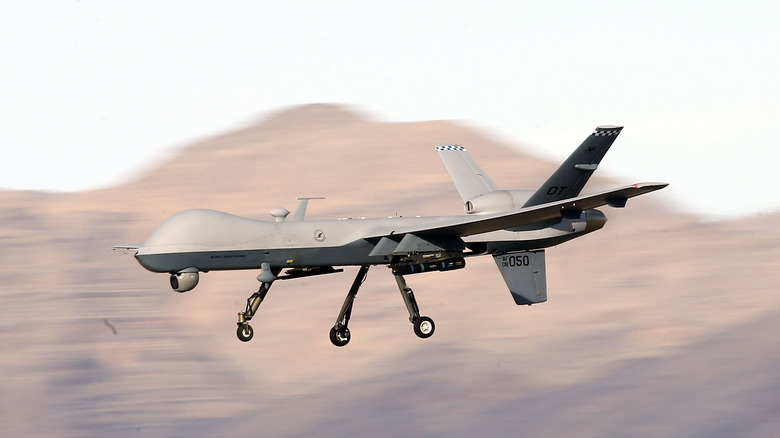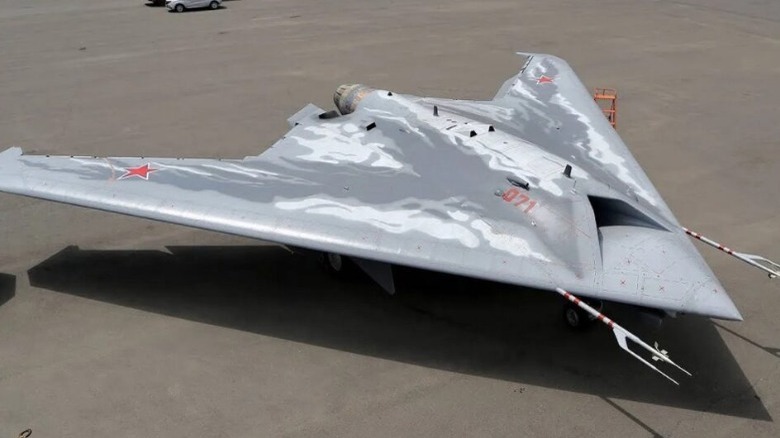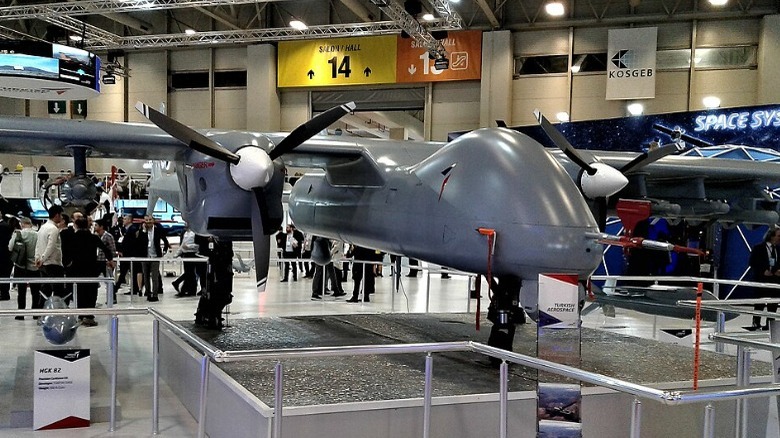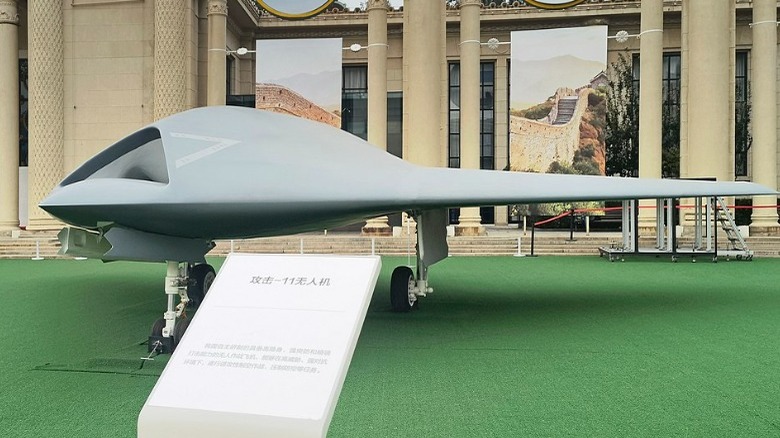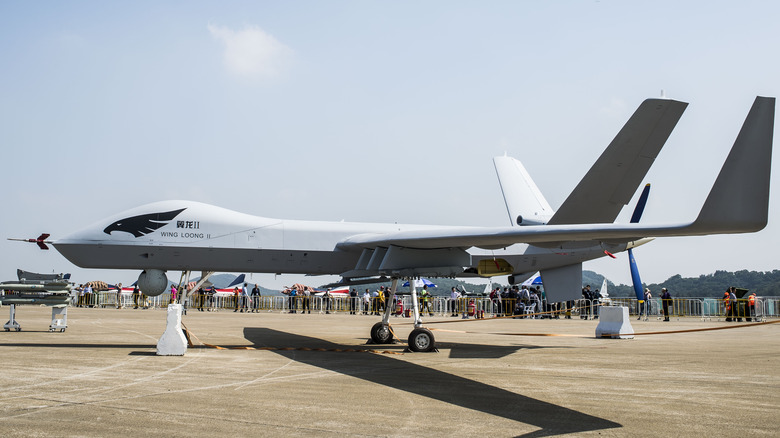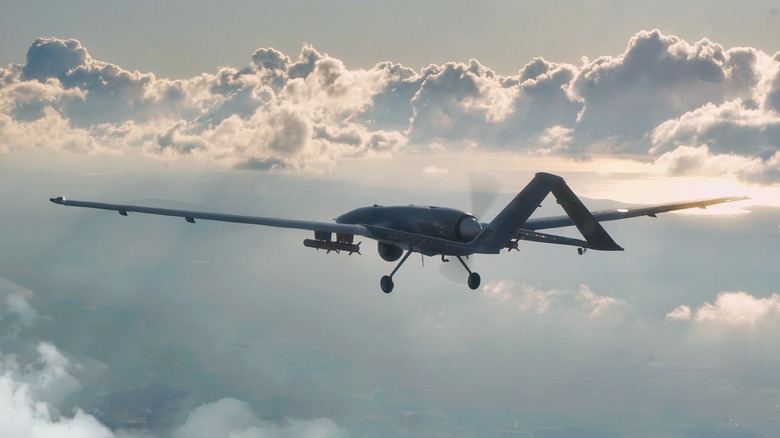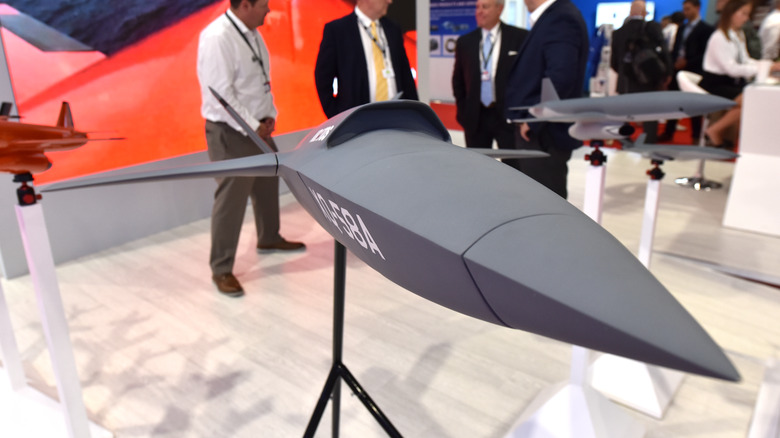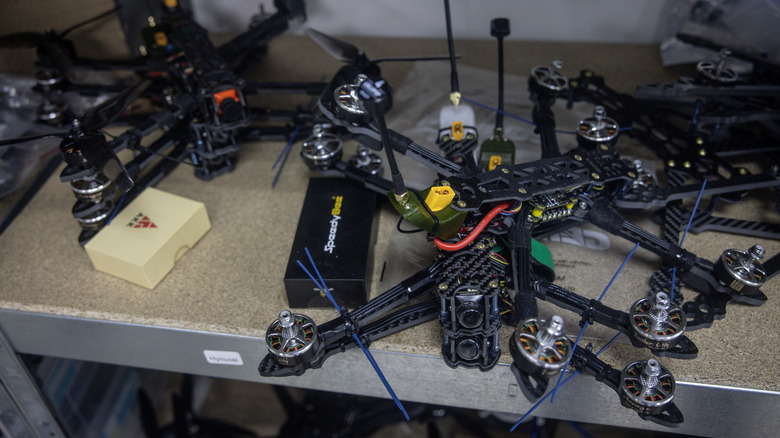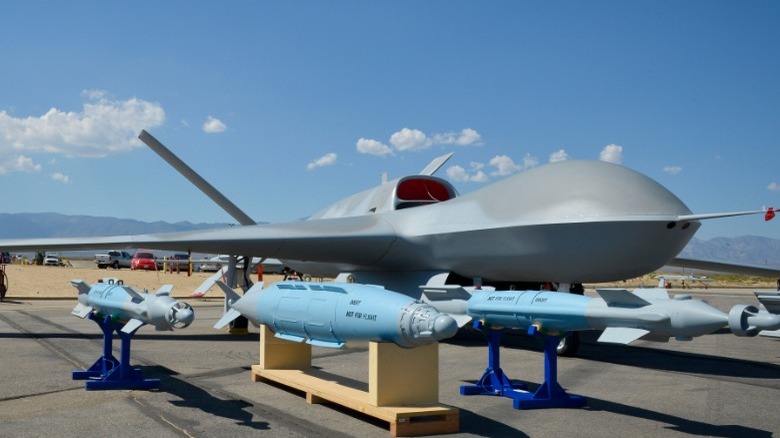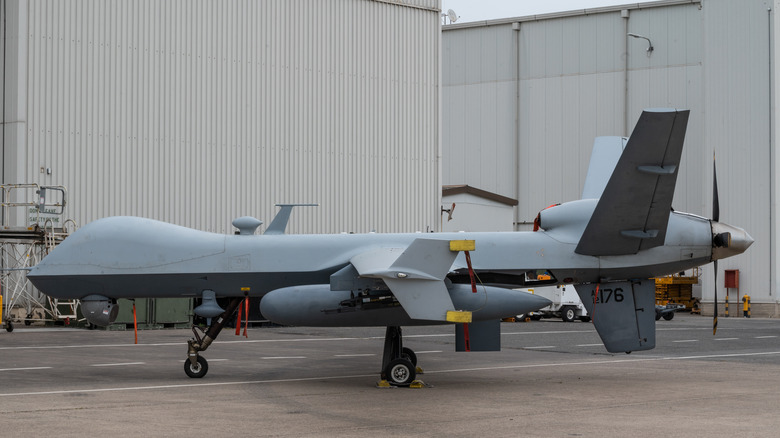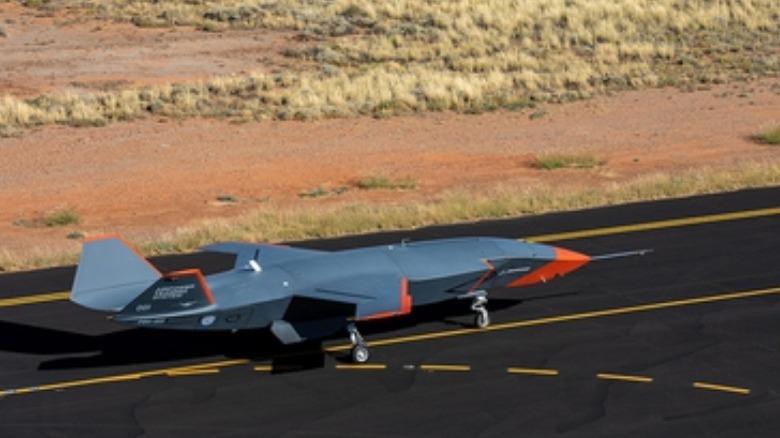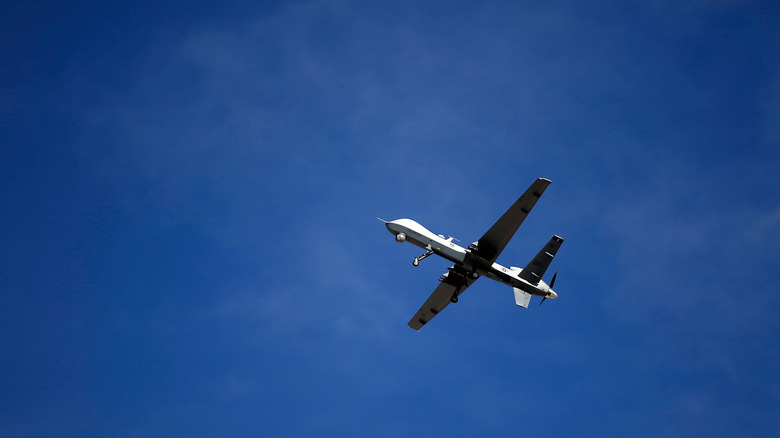10 Best Military Drones In The World In 2024
Drones are not a new invention and various militaries have been experimenting with unmanned aircraft as far back as the 1960s. However, drone use has become far more widespread as technology has advanced to make them more versatile and easier to manufacture. As a result, drones have evolved in some major ways since their introduction, becoming more essential to military forces.
Officially known as unmanned aerial vehicles, or UAVs for short, they can do everything from performing combat strikes to carrying out surveillance and rescue missions. In fact, some war drones are capable of terrifying things that you might not even be aware of. The main advantage of drones over typical aircraft like fighters and bombers is the fact that they don't have a crew onboard. Instead, operators direct the drones from the ground. This makes them the perfect choice for tasks that are too unsuitable, impractical, or dangerous for humans to carry out. The success of drones in combat situations has led to every major military adopting UAVs into their military forces in some way.
By examining the known specifications of combat drones, as well as their unique capabilities and records in the field, we've managed to field the very best military UAVs.
Sukhoi S-70 Okhotnik-B
The Sukhoi S-70 Okhotnik-B is a Russian-developed sixth-generation stealth drone. The project has largely been shrouded in secrecy, so it is unknown exactly what the drone is capable of or when it will enter service — although there have been suggestions that the Okhotnik-B may already be in use in the skies over Ukraine. Russia's government will not necessarily confirm that, but most analysts agree that mass production of the unmanned combat aerial vehicle will start in 2024.
The Okhotnik-B made its first flight in 2019 and is manufactured by MiG, a defense company best known for its fighter jets. Therefore, it shouldn't be a huge surprise that the drone is designed to work alongside and complement Russian aircraft as a "loyal wingman" (via Business Insider). As a result, drones can be directly controlled by a pilot in the air, carrying out a support role. The Hunter B, as it is also sometimes referred to, also uses artificial intelligence to allow it to communicate and pass data with other aircraft quickly and efficiently.
In terms of the drone's standard capabilities, it weighs 20 tons and can travel at speeds of up to 620 mph. With a range of over 3,500 miles, it can deliver its payload, which can be as much as two tons of munitions that include guided missiles, to targets well outside of Russian territory.
TAI Aksungur
Built by Turkish Aerospace Industries for the Turkish military, the TAI Aksungur is an unmanned combat aerial vehicle that falls into the medium-altitude long-endurance (MALE) subcategory. Its 4,000-mile range and low cruising speed of just 160 mph, along with an ability to stay in the air for up to 60 hours, make it a perfect aircraft for conducting surveillance and patrol objectives. However, that doesn't mean it can't carry out a support or attack role, with the drone able to carry three-quarters of a ton of munition.
The TAI Aksungur is one of the most recent drones to become operable and had a short development period of under two years. This was partly because it was based on earlier TAI Anka drones, although many of the elements of the TAi Aksungur are brand new, such as the propulsion system and airframe. Other countries like Algeria, Angola, and Kyrgyzstan have also expressed interest in acquiring a small number of these drones for their own militaries.
The drone has seemingly mainly been used, at least so far, in a support role to gather intelligence. Reports suggested the TAI Aksungur was involved in missions to detect Greek submarines in the Aegean Sea. One of the drones was also reportedly downed in the northern area of Iraq while almost certainly on a reconnaissance mission.
[Image by CeeGee via Wikimedia Commons | Cropped and scaled | CC BY-SA 4.0]
GJ-11 Sharp Sword
The GJ-11 Sharp Sword, also known as the Hongdu GJ-11, is a Chinese unmanned combat aerial vehicle that has been developed since at least 2013 when reports of the drone first surfaced online. Its shape closely resembles the Northrop Grumman B-2 Spirit, the US stealth bomber, with a flying wing shape and no tail. This shows that this drone is designed to evade enemy detection, utilizing its distinctive shape and other features to remain invisible to radar.
A joint project between Shenyang Aircraft Design Institute and the Hongdu Aviation Industry Group, the GJ-11 Sharp Sword has two main purposes as part of its role within the People's Liberation Army, performing surgical strikes on enemy targets and conducting surveillance and aerial reconnaissance deep in enemy territory without anyone knowing it was there. The drone can also work closely with navy vessels and can take off and land on carriers known as amphibious assault ships in addition to its capability to act as a loyal wingman to the Chengdu J-20 fighter jet.
It isn't clear whether the GJ-11 Sharp Sword is in active service, although it has been showcased at various airshows and events in recent years. There's also little information about its exact specifications outside, although reports indicate that up to three drones may be able to be controlled by a single J-20 pilot.
[Image by 颐园居 via Wikimedia Commons | Cropped and scaled | CC BY-SA 4.0]
CAIG Wing Loong II
The CAIG Wing Loong II is another unmanned aerial vehicle developed in the People's Republic of China for the People's Liberation Army Air Force. The drone, which also goes by Chengdu GJ-2, made its first flight in 2017 and is now in active service. As the name suggests, it is an evolution of the earlier CAIG Wing Loong and has since been modernized into the Chengdu Wing Loong-3, although very little is known about the successor as it has only recently completed test flights.
The main difference between the CAIG Wing Loong II and its predecessor is that it is larger and more powerful. Demonstrations of the drone's effectiveness came during the Libyan Civil War, when models operated by the military of the UAE were successful in downing Turkish UAVs. The drone is also used by Nigeria and Pakistan, carrying out strikes against hostile forces in both countries.
As an attacking force, the CAIG Wing Loong II can carry up to 480 kilograms of munitions, ranging from rockets and air-to-surface missiles to more traditional bombs. A top speed of 230 mph means it is not quite as fast as many of its counterparts but it can stay in the air for a staggering 32 hours of uninterrupted flight. The drone is also controlled by two different methods, using a Ground Control Station over shorter ranges and satellite communication for long-range missions.
Bayraktar TB2
The Bayraktar TB2 is a Turkish unmanned combat aerial vehicle of the medium-altitude long-endurance variety. Essentially, it is designed to fly at an altitude higher than 10,000 feet but lower than 30,000 feet while remaining in the skies for a significant period – with the Bayraktar TB2 able to have up to 27 hours of uninterrupted flight. Manufactured for the Turkish Armed Forces, the drone made its first flight in 2014 and it has since accumulated more than 200,000 flight hours across a fleet of 110 aircraft.
The UCAV is controlled by a team of operators working inside a ground control center, who can pilot the drone and deploy its weapon systems. This includes up to 150 kilograms of armaments that can be attached to its four fixed hardpoints on the wings, including laser-guided missiles and bombs. There is also a variant, known as the TB2S, equipped with a satellite antenna to allow operators to control the drone over longer ranges.
The TB2 has since been exported to Turkey, Qatar, Ukraine, and Azerbaijan having proved itself time and time again. The relatively cheap price and impressive capabilities have made it one of the most effective drones in use today. It will likely be replaced by another Turkish drone currently in development in the form of the Bayraktar Kızılelma, but only prototypes have been built so far and it is unclear exactly when it will be fully introduced to active service.
XQ-58 Valkyrie
Officially known as the Kratos XQ-58 Valkyrie, this is an unmanned combat aerial vehicle that has been developed for the United States Air Force. The drone is aimed mainly at being a loyal wingman, working with jet fighters in the air. This can include scouting ahead or providing a support role in combat situations. The manufacturer has designed the XQ-58 Valkyrie as a versatile aircraft that can take off in a variety of settings and can operate on its own or as part of a larger swarm of drones.
Built with stealth in mind, the airframe and overall shape are intended to reduce its radar cross-section and make it difficult to detect. Meanwhile, a turbofan engine can provide enough thrust to get the XQ-58 Valkyrie to a top speed of 548 mph and a range of over 3,500 miles. Thanks to the fact that the drone can be made entirely with commercial-off-the-shelf components, it can be produced in high numbers at a low cost, with estimates suggesting the price per unit could go as low as $2 million if it is produced in high enough capacity.
While the XQ-58 Valkyrie is not yet in full active service, it has conducted several test flights. In one of these, the drone was used to launch a smaller and more compact UAV while in the air, demonstrating an ability to act as a carrier for other drones. Both the United States Marine Corps and United States Navy are conducting tests with the XQ-58 Valkyrie, and the drone has also flown alongside a McDonnell Douglas F-15E Strike Eagle in tandem as a loyal wingman craft.
Ukraine's makeshift drones
The war in Ukraine following Russia's invasion of the country has demonstrated that high-tech military drones may not always be the best solution. The country's military has made extensive use of cheap consumer drones that have been modified to carry explosives and avoid enemy detection. These drones do not all have the same design or specifications, but can be quickly put together and are inexpensive to acquire and construct. This has made them perfect for overwhelming Russian forces and brought into question whether tanks are useless in the modern age.
Ukraine has been producing a huge amount of small drones throughout the conflict and is set to create more than 1 million modified drones in 2024, although the country claims that number could be doubled if it had more funds. The small size of the drones, roughly the same size as those that consumers can purchase, makes them incredibly difficult to spot and shoot down. The director of the Dronarium military academy, Pavlo Tsybenko, explained how only a net was any real defense — especially given how Russia has failed to establish air superiority over Ukraine.
Tsybenko detailed how easily the drones could be assembled and how quickly operators could be trained, telling Politico: "This drone costs up to $400 and can be made anywhere. We made ours using microchips imported from China and details we bought on AliExpress. We made the carbon frame ourselves. And, yeah, the batteries are from Tesla."
General Atomics MQ-20 Avenger
The General Atomics MQ-20 Avenger, often just referred to as simply the Avenger, is an unmanned combat aerial vehicle that debuted in 2009. It can be piloted remotely by an operator on the ground or fly autonomously with the help of artificial intelligence. The drone has successfully taken part in combat exercises designed to test the ability of human and AI pilots to work together in combat situations.
The turbojet engine, unique among General Atomics current drone fleet, gives the Avenger an increased range and speed compared to the Reaper, as it can travel at 460 mph and remain in the air for up to 18 hours. That has made it potentially attractive to US military forces, especially when combined with its ability to carry larger payloads and systems. A United States Air Force spokesperson confirmed this, telling Flight Global: "Since it has an internal weapons bay and four hardpoints on each wing it will also allow greater flexibility and will accommodate a large selection of next-generation sensor and weapons payloads."
In terms of weaponry, the Avenger is compatible with the same armaments that the Reaper can carry and utilizes the same advanced targeting system as the F-35 Lightning II. While the drone is not in active service with any US military, General Atomics has been in negotiations to export the Avenger to other countries, including Canada and India.
[Image by MC1 Peter D. Lawlor via Wikimedia Commons | Cropped and scaled | Public Domain]
MQ-9 Reaper
The MQ-9 Reaper is probably the most well-known and widespread military drone in the world. Manufactured and designed by General Atomics Aeronautical Systems, it acts as a successor to the earlier General Atomics MQ-1 Predator drone, which is why it is sometimes known as the Predator B. Pilots can take direct control of the vehicle or it can be set to fly autonomously, meaning it is suitable for a wide range of different missions.
The MQ-9 Reaper stands out for simply being so much more powerful than comparables. This allows the drone to be far larger, travel faster, and carry significantly bigger payloads. This makes it a deadlier and more effective option for the battlefield. The MQ-9 Reaper can take off and land on different terrains. It can also carry out surveillance and gather intelligence or be tasked with performing strikes against targets.
Able to reach top speeds of 300 mph and stay in the air for more than 24 hours across 1,200 miles, the MQ-9 Reaper has a long operational history. Outside of the United States, other militaries also use the MQ-9 Reaper in various roles due to its effectiveness and versatility. The UK's RAF has several drones in active service, while other European nations such as France, Italy, and the Netherlands all have some MQ-9 Reapers.
Boeing MQ-28 Ghost Bat
The Boeing MQ-28 Ghost Bat is an Australian unmanned combat aerial vehicle developed to carry out multiple roles for the Royal Australian Air Force. Although it incorporates stealth elements, it is a drone primarily meant to be deployed as a loyal wingman, offering support and additional combat capabilities to the aircraft. In practice, it can scout ahead, help gather intelligence, and potentially absorb incoming enemy fire to ensure survival.
Utilizing artificial intelligence, the Boeing MQ-28 Ghost Bat can fly autonomously without the need for a pilot, it has a potential range of over 2,300 miles. The nose of the drone also has what is known as a modular mission package system. This essentially means that it can swap out the nose for various other designers to carry out distinct roles and missions without undergoing extensive modifications. The MQ-28 features a jet engine that can carry out maneuvers similar to the fighter jets it will work alongside and ensure it can reach the high speeds of Australian aircraft. Several test flights have been carried out for the drone and it is expected to enter active service by the end of 2025.
[Image by Boeing Australia via Wikimedia Commons | Cropped and scaled | Fair Use]
Why these combat military drones made the list
Determining the best military drones is not an easy or completely accurate task. After all, militaries are secretive by nature and typically don't disclose all of the capabilities of their equipment to avoid giving enemy forces important information.
Yet, wherever possible, we have used known specifications and official sources to gather information. Where that has not been practical, data and information from trusted sites and publications have been used. SlashGear has then ranked the UAVs based on those details, combined with their combat records and the general effectiveness of the drones on the field.
